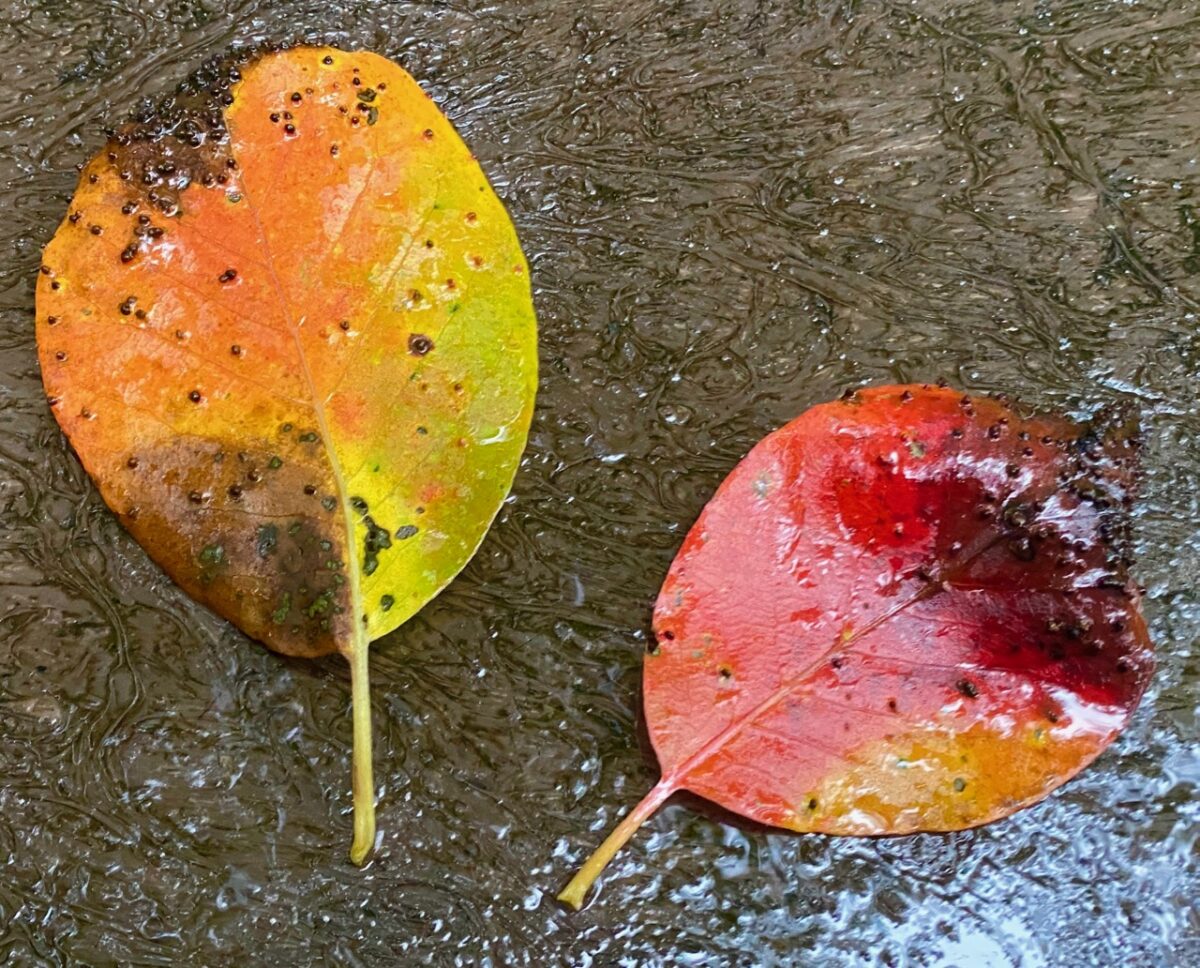Secret Vistas –
By Glynn Wilson –
CATOCTIN MOUNTAINS, Md. — Many years ago in a land far away, I proposed a way to test E.O. Wilson’s Biophilia hypothesis by adding a few questions to annual surveys of visitors in the most visited national park in the United States, the Great Smoky Mountains National Park in North Carolina and Tennessee.
It is consistently the most visited national park in the country, situated within a day’s drive of half the population of the U.S. The park recorded more than 14.1 million visits in 2021.
But measuring “visits” is like measuring “hits” on a website, and does not drill down into “unique visits” by individual people. The same people could visit five or 10 times, for example.
Viewing mountain scenery was the primary reason given for visiting by 35 percent of those who answered the surveys, and a substantial percentage of those liked to visit in the fall, when the autumn leaves are changing colors in the trees.
Some get out of their automobiles to hike or fish, and some came to campout in the campgrounds. But many just liked to drive through in their cars or trucks and take in the scenery.
Biophilia is defined as the evolutionary, genetic human instinct to seek connections with nature and other forms of life. The term is derived from the Greek words for “life” and “love or affection” making its literal translation “love of life.”
The term was first used by Erich Fromm to describe a psychological orientation of being attracted to all that is alive and vital. E.O. Wilson uses the term in a related sense when he suggests that biophilia describes “the connections that human beings subconsciously seek with the rest of life.” He proposed the possibility that the deep affiliations humans have with other life forms and nature as a whole are rooted in our biology. Human preferences toward things in nature, while refined through experience and culture, are the product of biological evolution.
It is my hypothesis that there are two kinds of people in the world. Those who retain and foster their sense of biophilia, and those who have lost it in the Industrial Age and beyond and deny it.
If I could have gotten more cooperation from the professors in Science Communications and Environmental Sociology at the University of Tennessee 20 years ago, we would know more about this now. But some people were too busy with their own research priorities and biases back then so I’ve just had to make my own private observations over the years through my travels.
On a camping trip through the Smokies back in 2009, in part to celebrate the 75th anniversary of the park creation by President Franklin Roosevelt, we were still waiting to see if President Barack Obama would join the lineup and stand where Roosevelt stood at Newfound Gap on the two state lines in 1940. He turned down the invitation. Mr. Obama was from Chicago, a big city, and even his early performance in handling the BP Gulf Oil disaster in the Gulf of Mexico in the spring of 2010 showed that he was not a nature person. He would later come around, thanks to the influence of his daughters as they grew up in the White House.
National Park Celebrates 75th Anniversary
Perhaps our greatest presidents who were nature people were Teddy Roosevelt, Herbert Hoover and Franklin Roosevelt. While many of the early environmental programs and laws we live under now were implemented in the Nixon years, I don’t think anyone who knew Nixon would say he really cared for nature. He was just doing, “What the goddamned New York Times said I should do,” according to the secret White House tapes.
Trump, of course, didn’t even care what The New York Times said — with the possible exception of Maggie Haberman — so his idea of nature was a country club golf course where he could cheat just like he did in life, business and politics.
In My Case
Not being from the city or the country, but the suburbs, I’m not exactly sure why I ended up with a heightened sense of biophilia. Although a clue lies in a childhood experience of watching an entire forest being clear-cut to expand a suburb. I only briefly mention this in my memoir, since one of the things they built where that forest stood was a college, which probably saved my life.
But I’ve long had an abiding interest in the natural environment, and a deep need to connect with nature.
So every year, no matter where I happen to be in the fall, I’m always on the lookout for changing autumn color in the leaves on the trees.
Millions of people all over the country and the world share this biophilic interest, and there’s also a sense of art involved. I’ve never claimed to be even close to the world’s greatest photographer, but every year I try again to see if I can capture one of the most spectacular art shows nature provides. Autumn color.
It’s just now beginning to happen here in these mountains, where the light is often more spectacular than valleys, although being close to water seems to heighten the effect.
Other news outlets know there is an audience or a “market” for information about this, so it is treated as an issue for the Travel section of newspapers and magazines.
The New York Times delivered just such a piece this week, heralding the chase for fall color viewing as a nearly religious “pilgrimage” sort of thing, never even hinting at the evolutionary, biological drive involved.
They did include some information about how climate change is changing this phenomenon, pointing out that a hotter climate and droughts in the Northeast and West have deprived trees of water this summer, which is critical to what kind of autumn an area will have. Since the broadleaf growing season is being extended by the warmer climate, fall color arrives later in some areas, which also has a muting effect on certain colors like the deep reds and purples in some species.
They call these people who chase the art and science of autumn color “leaf-peepers,” as if they were just another form of voyeur out there in the world in a crazy scramble to get off on beauty.
Since we are not in the “how to” news business, more interested in “literary journalism,” there are many places to turn for websites and apps to chase the fall colors in your area. Most people will just use a search engine for that anyway. Google it.
Here are a few early shots of autumn color where I’m currently camped. There will be more to come. Enjoy.
Autumn Photos 2022
___
If you support truth in reporting with no paywall, and fearless writing with no popup ads or sponsored content, consider making a contribution today with GoFundMe or Patreon or PayPal.




















